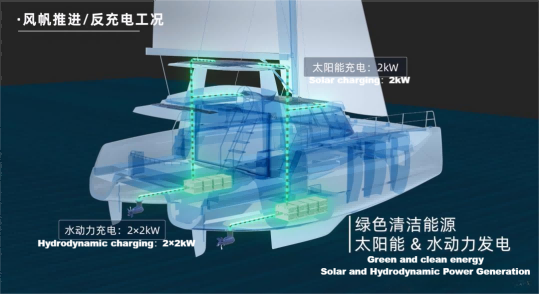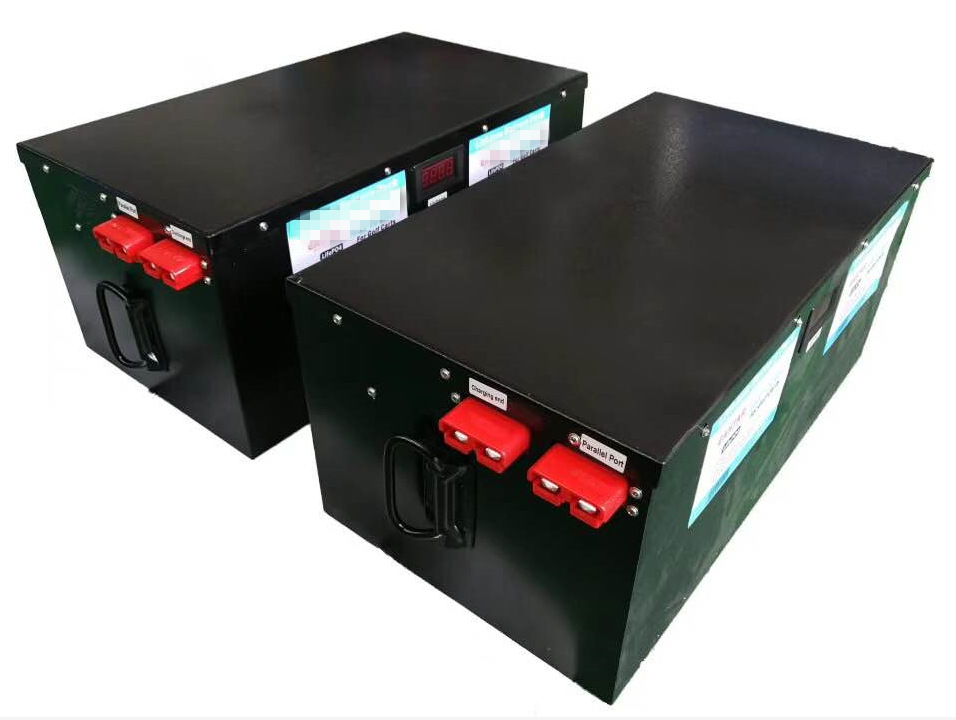 |
Welcome To Evlithium Best Store For Lithium Iron Phosphate (LiFePO4) Battery |
 |
Currently, pure electric power sources can drive heavy trucks and operate 10000 ton cruise ships.
Thanks to the breakthroughs in the underlying performance such as the energy density of lithium batteries, and the promotion of emission reduction policies in the global shipping industry, electric ships have become the next large-scale scenario for the application of power batteries after electric vehicles.
Recently, Fayi Yidong 42C's new energy catamaran, China's first pure electric offshore catamaran, was released. It was equipped with CALB Lithium iron phosphate power battery products, achieving a maximum speed of 8kt, a maximum endurance of 20h, and a range of 100 nautical miles.

It is reported that CALB's ship market products have covered multiple types of batteries, including 163Ah, 220Ah, 230Ah, 280Ah, etc. Its self-designed and developed zero carbon ship energy storage power system is the first ship battery system product in China to obtain DNV certification.
Multi-party rapid layout
According to the information disclosed on the official website of the China Classification Society (CCS), at present, CCS has issued type approval certificates for lithium battery-related products to dozens of battery companies such as CATL, CALB, EVE, Gotion, Sunwoda, REPT, Ganfeng Lithium, and Lishen Battery. They are covering batteries, modules, BMS, and battery packs.
Among them, EVE is the first battery manufacturer to enter the field of electric ships. As early as 2016, EVE's marine power battery was certified by the China Classification Society.
Since then, the domestic pure electric cruise ship "Kuokuozhen Princess", the first domestic large-scale pure electric commercial passenger ship "Junlv", the pure electric port tugboat "Yungang Electric Tug No. 1", the pure electric container ship "Guochuang" "It is equipped with CATL lifepo4 battery.
As a leading power battery company, CATL also has an early layout. Since 2018, the first electric high-end inland river cruise ship "Minjiang Star" in Fujian Province, the first maritime dangerous goods emergency command ship "Deep Sea 01" independently designed and built by China, and the largest domestic comprehensive marine scientific research training ship "Sun Yat-sen University ¡± and the new energy pure electric ship ¡°Yangtze River Three Gorges No. 1¡± with the largest battery capacity in the world are all equipped with CATL¡¯s square lithium iron phosphate batteries.
At the end of last year, CATL also registered and established a wholly-owned subsidiary, CATL Electric Boat Technology Co., Ltd., whose main business direction is related to technology, product development, and application of marine power battery systems.
Electric shipping is the trend
Although the demand for power batteries for electric ships is not as high as that of electric vehicles, it is still a pure incremental market that cannot be underestimated. According to industry forecasts, the global electric ship market will reach US$10.82 billion (approximately RMB 69 billion) by 2027.
The currently installed ship types are mainly concentrated in inner lakes, inland rivers, and offshore ports, mainly passenger ships, cargo ships, port tugboats, harbor ships, and offshore engineering ships.
With successive breakthroughs in ship power system networking technology, ship electric propulsion technology, and high-power grid-connected technology, the electrification of large, long-distance shipping ships is expected to start.
Regarding policy, since more than 90% of the world's international trade volume is completed by sea, both at home and abroad are increasing their support for shipping decarbonization, and electrification is an important way.
Last month, the Singapore government announced that from 2030, new port ships operating in the port of Singapore must be fully electrified or driven by net-zero emission fuels.
As the country with the largest number of electric ships in the world, Norway has also set the goal of making Oslo Port the world's first zero-emission port by 2030.
It is worth noting that the current electric ships in Norway and other European and American countries are equipped with ternary batteries. However, in terms of safety, life, cost, and other factors, lithium iron phosphate batteries are still the best choice for marine power batteries at this stage.
The integration of power exchange and energy storage has become an innovation point
Although electric ships have the advantages of environmental protection, high reliability, and low operating costs, their large-scale commercialization is hindered by high initial investment costs and imperfect charging facilities.
Unlike the 10-year lifespan of an electric car, a ship typically has a 30-year lifespan. That is, the battery needs to be replaced two to three times during a complete usage cycle.
In the view of some industry insiders, introducing the concept of "battery bank" in the form of battery exchange and leasing is a way to solve the high initial cost. The battery swap mode can increase the ship's voyage and reduce the charging time of the ship in port, which is an important means to solve the anxiety of cruising range.
In addition, the "plug-and-pull" container-type battery can use the peak-valley electricity price difference to store energy, which can further enhance the economy of electric ships during operation.
At present, the shore power system (using the power supply on the dock to charge when docking) is still the mainstream energy supplement solution, but there are still problems such as limited coverage, insufficient capacity, different power systems, slow charging speed, and equipment compatibility.

In the future, the construction of the shore power system is expected to increase the integration of energy storage facilities, forming an independent track parallel to the "light storage charging and inspection" of electric vehicles.
Overall, electric ships are still in the initial stage of introduction, but they have broad prospects and increasingly fierce competition. Behind it is the unstoppable electrification trend in large transportation fields such as automobiles, ships, and airplanes.
Edit by Paco
All Rights reserved © 2025 Evlithium Limited